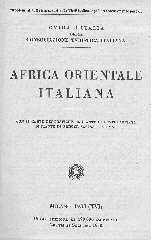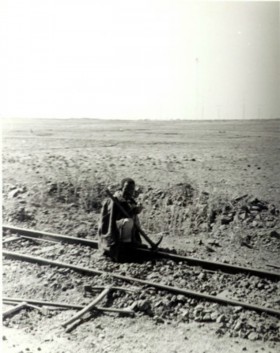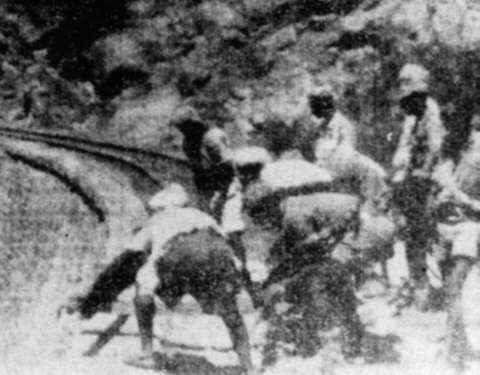Operating the Line
I have separated the time spans into building the line, operating the line and rebuilding the line. Obviously, the train operated in all three eras.
There are a few books out there with material about this era. I am trying to get copies through purchase or library loan. Hans van der Splinter found a Dutch translation of Durrant, et al's Steam in Africa.
The operating era, as I have classed it spanned the era from completion through Biscia through the last train in the 1970s. During this era, it was the Ferrovie Eritree and then the Eritean Railway & Ropeway. Finally, it became known as the Northern Ethiopia Railway...Then, the Imperial Ethiopian Government Railroad. Now, it is the Eritrean Railroad.
Shortly after the end of construction, during the buildup for the invasion
of Ethiopia in 1935, there were 30 trains a day. Renato has a 1938
book about Italian East Africa. He has been so kind as to provide
the scans of a few pages.

The railway served Italians during the invasion of Ethiopia. Also, it served the British in their fight against the Italians. Dave Engstrom has sent me some material on the latter.
According to East African Handbook, in 1965 railway usage peaked with 446,000 passengers and 200,000 tons of freight. Daily service with diesel locomotives ran between Asmara and the coast. On alternate days, trains ran from Asmara to Agordat. It should be noted that as recently as 1970, steam operated regularly between Asmara and Massawa and there were two trips a day in each direction with Littorine.

Photo courtesy
of Jerry Pry.
During my tenure in Asmara, once of my excursions to take pictures
gave me the chance to take a few pictures
of the train in operation. I also took pictures while riding
a Littorina down the mountain.

This picture is from Asmara
Style. It shows a Littorina between Asmara and Massawa.

This picture comes form the same source. I believe this is between
Asmara and Agordat. I do not recall ever seeing a steel truss bridge
between Asmara and Massawa. The only first person description I have
seen that covers the line from Asmara to Agordat appeared in a November
1969 Trains magazine article.

Photo courtesy of Chuck Moulton
Chuck Moulton's picture at first didn't strike me...except it demonstrates
the large height the road was with respect to the railway. Upon closer
look, I saw that there were gour people working on the the track with one
standing a little further down the line. One is at the shadow line
in the cut. The second and third are down slightly from him
on the other side of the shadow and the fourth is about the same distance
only across the tracks from them.

Photo Courtesy of Roger Dodson.
Roger Dodson photographed this railway worker taking a break near Tract
C of Kagnew Station.
Often these people would be called "gandy dancers" in the states. On the Chicago and North Western, they were called the section gang. The "gandy dancers" were the reconstruction grunt labor lugged in when there was much work to do. Often, they were recruited from the drunk tank in Chicago and didn't have a very good reputation. I didn't see too many low life working in Asmara. These would have been called Section Gang.

GRAF©1975
The above picture shows revolutionaries removing the rails near Asmara.
The last train of the former colonial railroad traveled the 117 km to Asmara
on a September morning of 1975. The Eritrean Revolution started in
1961 and more than once the railway was the target of the revolutionaries.
As result, the line was torn apart by the then Ethiopian Government and
various revolutionary factions. Much of the rails and sleepers were
used to build bunkers. According to more than one expatriate, many
of the rails were taken to serve as spares for the Djibouti-Addis Ababa
line.
SEARCH
All copyrights remain with the original sources. No permission
is granted for further use with out their expressed consent

Home |

Scrapbook |
| Who | What | Why | When | Where |